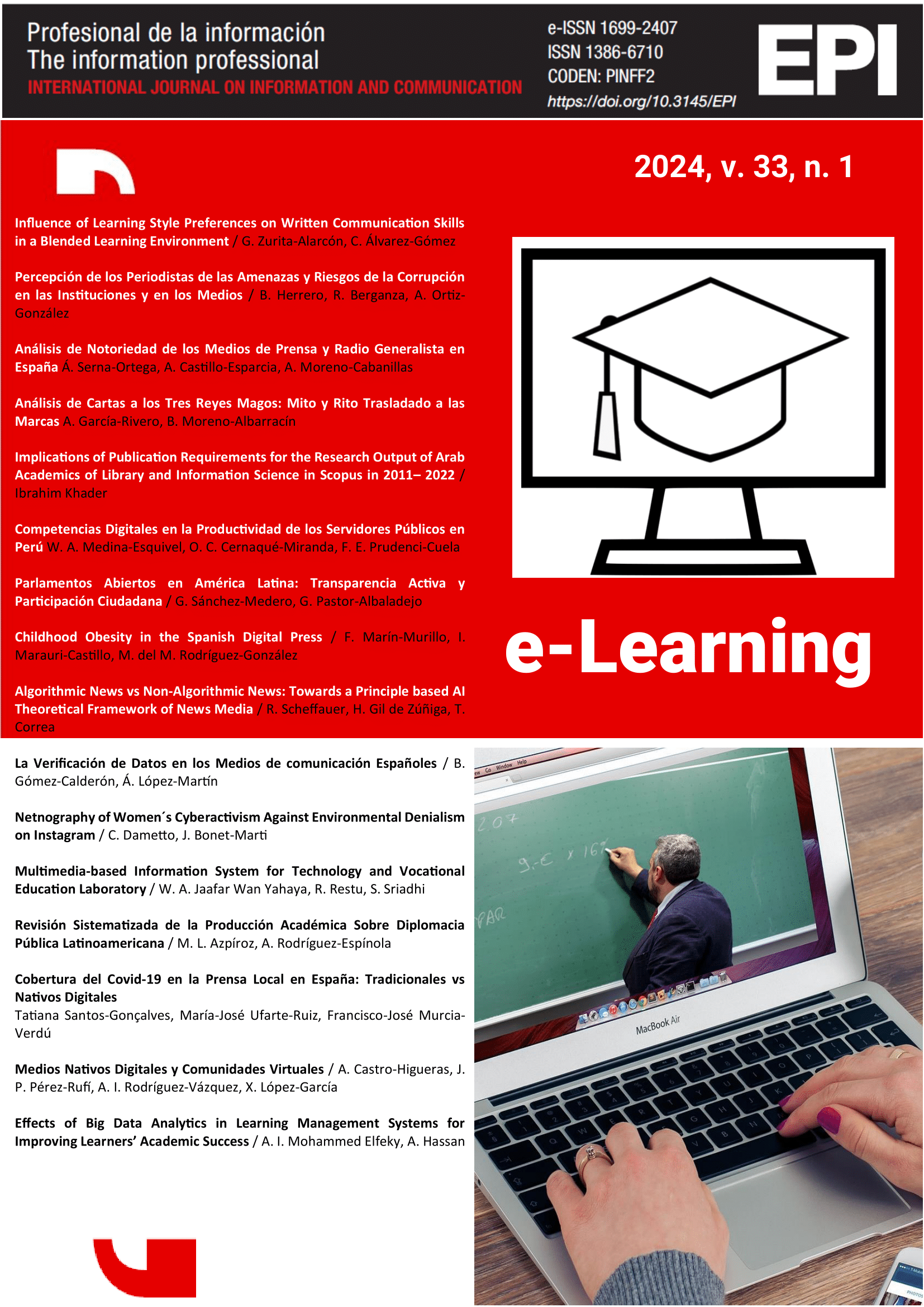Multimedia-based Information System for Technology and Vocational Education Laboratory
DOI:
https://doi.org/10.3145/epi.2024.0012Keywords:
Laboratory Management, Information System, Laboratory Standards, MultimediaAbstract
The significance of Technological and Vocational Education (TVE) lies in producing professionals with competencies that are required to support the academic community. The aim of this study was to build an Information System of Laboratory (ISLab) that would improve the performance of the technical and vocational educational laboratory. The proposed information system was built based on multimedia featuring text, graphics, 3D images, grassroots access, and top-down reviews. The study used the System Development Life Cycle (SDLC) technique, and the data was analyzed using descriptive, gain-score, and inferential factorial design. The study findings proved that ISLab operated in accordance with laboratory standards and achieved a performance of 90.3% according to user needs. Furthermore, laboratory management using ISLab was found more effective than conventional management system, and the proposed method of management enabled interaction with user groups that led to an increase in performance of laboratory staff and lecturers. The results of this research indicate that ISLab was suitable to be used in managing technical and vocational educational laboratories.
Downloads
Downloads
Published
Versions
- 2024-06-04 (2)
- 2024-03-01 (1)
How to Cite
Issue
Section
License
Copyright (c) 2024 Profesional de la información / Information Professional

This work is licensed under a Creative Commons Attribution 4.0 International License.
Dissemination conditions of the articles once they are published
Authors can freely disseminate their articles on websites, social networks and repositories
However, the following conditions must be respected:
- Only the editorial version should be made public. Please do not publish preprints, postprints or proofs.
- Along with this copy, a specific mention of the publication in which the text has appeared must be included, also adding a clickable link to the URL: http://www.profesionaldelainformacion.com
- Only the final editorial version should be made public. Please do not publish preprints, postprints or proofs.
- Along with that copy, a specific mention of the publication in which the text has appeared must be included, also adding a clickable link to the URL: http://revista.profesionaldelainformacion.com
Profesional de la información journal offers the articles in open access with a Creative Commons BY license.




